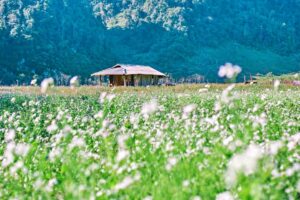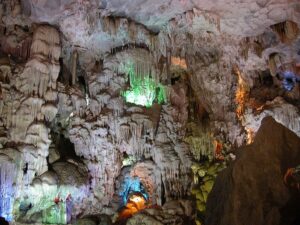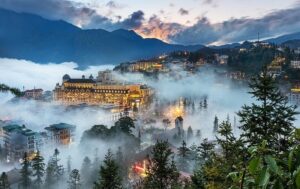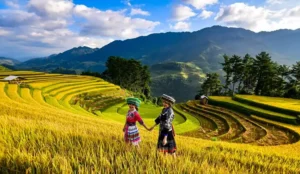Dien Bien
Dien Bien is a province located in the northwest region of Vietnam, known for its historical significance, stunning landscapes, and rich cultural heritage. It is most famous for being the site of the historic Battle of Dien Bien Phu in 1954, which played a crucial role in the end of French colonial rule in Indochina. Today, Dien Bien offers visitors a combination of natural beauty, historical sites, and a deep connection to the region’s diverse cultures.
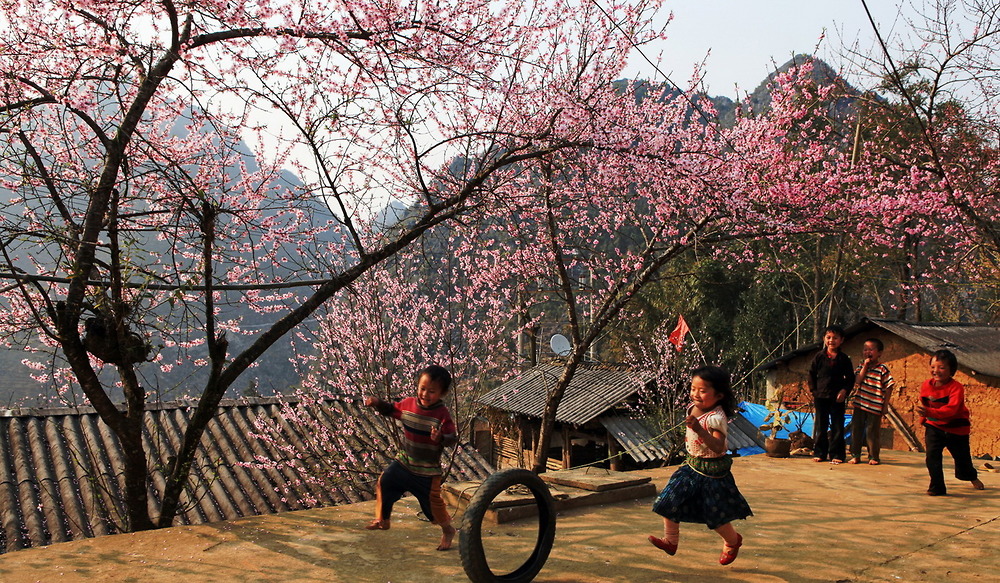
Geography and Climate
Dien Bien is bordered by Laos to the west and China to the north, with a mountainous terrain that is part of the Hoàng Liên Sơn range. The province’s geography features valleys, rivers, and lush forests, making it a beautiful and peaceful destination for nature lovers. Dien Bien has a tropical monsoon climate, with cool weather in the winter months and warmer temperatures during the summer, making it a year-round destination for travelers.
Ethnic Diversity
Dien Bien is home to a variety of ethnic groups, including the Thai, H’mong, Tay, and Kho Mu people. This diversity is reflected in the local festivals, colorful traditional costumes, and unique cultural practices. Visitors can experience the local way of life through interactions with the people, especially at traditional markets or during the annual ethnic festivals that showcase the region’s vibrant culture.
Impressive Attractions in Dien Bien
1. A1 Hill Relic

Dien Bien is a mountainous province located in the northwest of Vietnam, known for its diverse terrain of hills, mountains, and rivers. With its unique historical and cultural heritage, Dien Bien promises to be an ideal destination for travelers who love exploration and adventure. Below are some must-visit attractions when visiting this historical land.
A1 Hill is part of the Dien Bien Phu Battlefield, and it is one of the most famous historical landmarks in Dien Bien. Located to the east of the Dien Bien Phu fortress complex, A1 Hill is a strategic high point that played a key role in protecting the center of Muong Thanh Valley. Here, the enemy had deployed substantial forces and firepower, with well-fortified defensive structures.
The battle at A1 Hill was fierce and lasted for 39 days and nights, during which over 2,000 of our soldiers sacrificed their lives heroically. At the summit of A1 Hill, remnants of explosive craters caused by 960 kg of explosives can still be seen today.
A1 Hill remains largely intact, with its tunnel system, defensive platforms, water pumping stations, and other structures preserved. Visitors can explore and learn about this historic battle while enjoying the beautiful scenery from the hilltop.
2. Dien Bien Phu Victory Museum
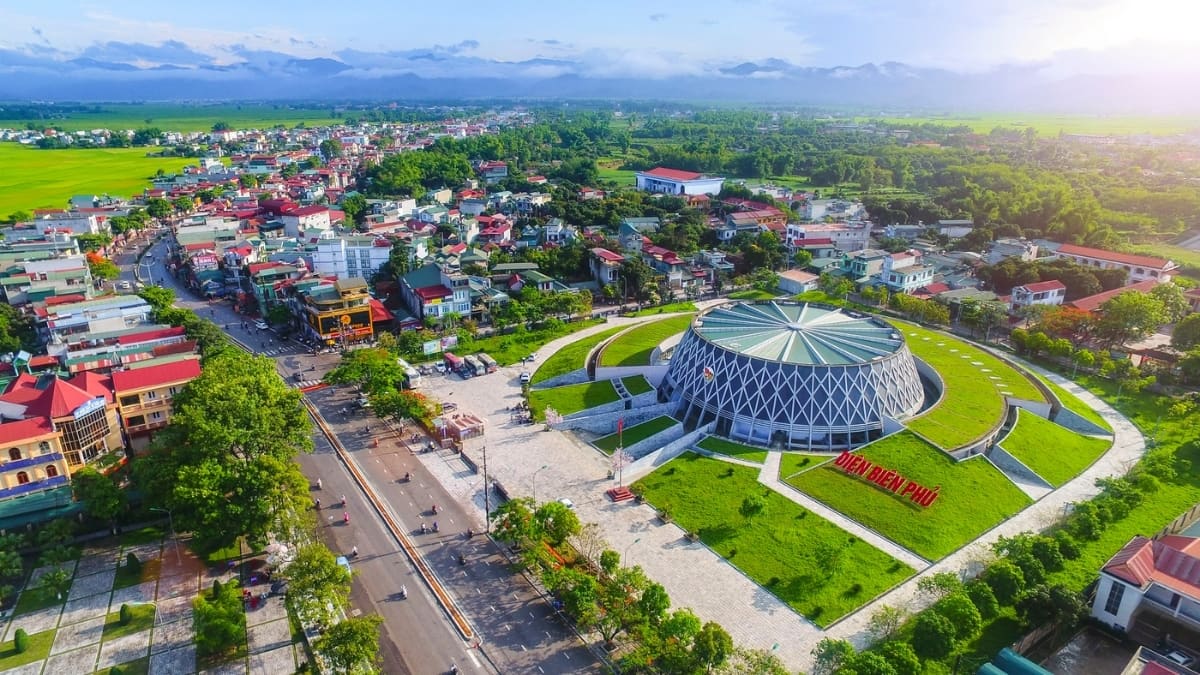
The Dien Bien Phu Victory Museum was begun in October 2012 on a 22,000 m² site and officially opened on May 5, 2014, after nearly two years of construction. At this museum, visitors can admire artifacts, photographs, documents, and models that simulate the historic battle at Dien Bien Phu, from decisive battles to the daily lives of soldiers during the difficult days of the conflict.
The museum is designed in the shape of a truncated cone, with the outer structure resembling a soldier’s helmet from ancient times. The museum includes a basement and an upper floor.
The basement primarily serves as a space for welcoming guests and hosting cultural and educational activities, while the upper floor contains permanent exhibitions about the Dien Bien Phu victory.
A highlight of the museum is the Panorama painting of the Dien Bien Phu Campaign, which is considered one of the ten largest war-themed paintings in the world. The painting recreates the entire 56-day battle that “shook the world” and is divided into four parts: The People Go to War, The Heroic Prelude, The Historic Confrontation, and The Triumphant Victory. The images and events are seamlessly connected to create an engaging and vivid visual representation of the campaign.
3. Pha Din Pass
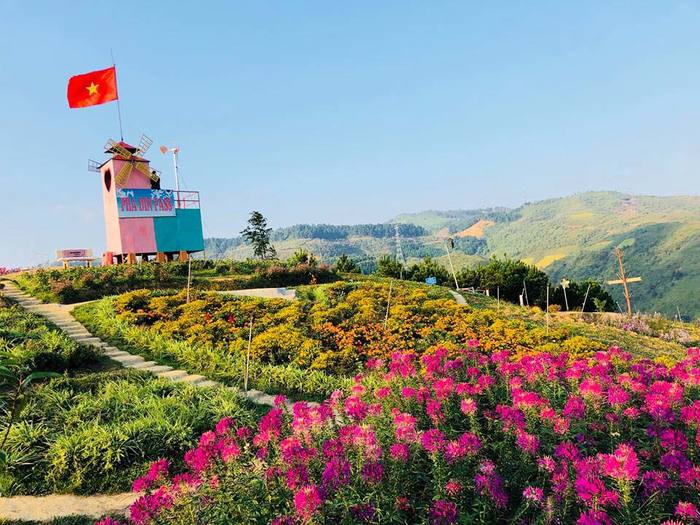
Pha Din Pass is one of the Four Great Passes of the Northwest and is a must-visit destination when traveling to Dien Bien. When you arrive, be mentally prepared for the thrilling experience of navigating the winding roads.
The name “Pha Din” in Thai means “the junction between heaven and earth,” symbolizing the stunning natural landscape here. Pha Din Pass is located about 100 km from Dien Bien Phu and marks the boundary between Dien Bien and Son La provinces.
Legend has it that this pass was once marked as the dividing line between Dien Bien and Son La. In ancient times, people and horses from both provinces raced to this point, and they were evenly matched, making it difficult to declare a winner. However, in the final stretch, the horses from Lai Chau were faster, so the Pha Din Pass on the Dien Bien side became longer.
Pha Din Pass is considered a natural masterpiece, with perilous bends at an altitude of over 1,000 meters. From a distance, the pass looks like a rope connecting mountain peaks and slopes in a stunning manner.
4. A Pa Chai
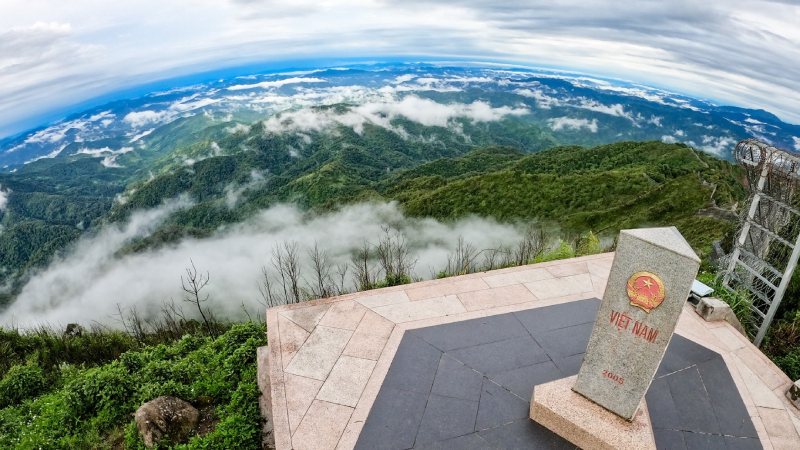
For adventure lovers and mountain trekkers, A Pa Chai is an unmissable destination in Dien Bien. Situated in the highlands of Muong Nhe district, A Pa Chai is known for its picturesque terraced rice fields, creating a breathtaking landscape. The area is also famous for the milestone marked as the “Zero Point,” which marks the westernmost point of Vietnam, located at coordinates 22°23’53″N 102°8’51″E.
Moreover, A Pa Chai is one of the two “Indochina crossroads,” where the borders of Vietnam, Laos, and Cambodia meet. There is a local legend that when standing at this point, if a rooster crows, all three countries in the Indochina Peninsula can hear it.
Visitors come to A Pa Chai not only to admire its natural beauty but also to explore the unique cultures of the ethnic groups living there. The traditional cultures of the H’mong and Thai people in this area will captivate travelers with their hospitality and diversity.
With its pristine natural beauty and rich cultural heritage, A Pa Chai in Dien Bien is an ideal destination for those seeking a new experience and a relaxing time in the peaceful mountain atmosphere of northern Vietnam.
5. Muong Nhe Nature Reserve
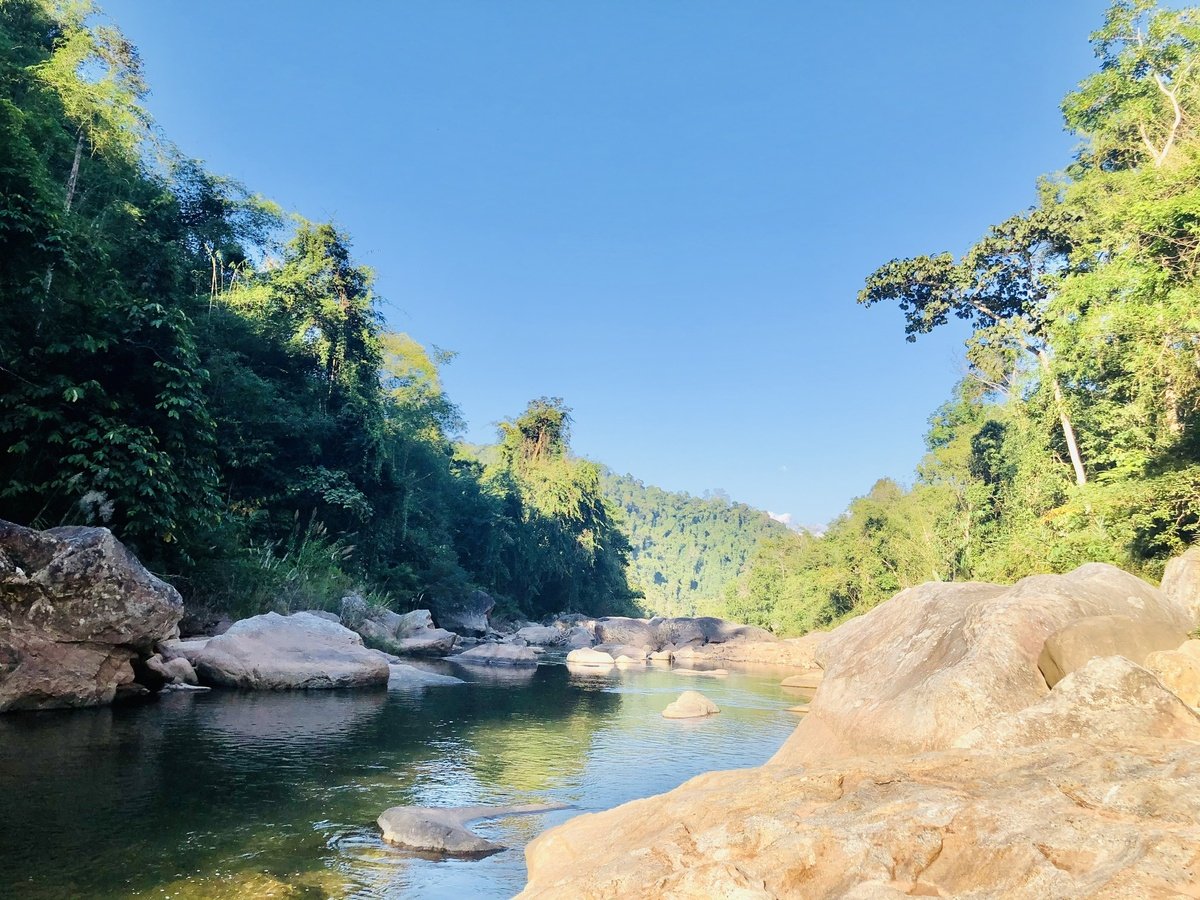
Unlike A Pa Chai, the road to Muong Nhe is not difficult to travel. From the town of Muong Cha, visitors can follow the border road to Muong Cha – Si Pha Phin to reach the nature reserve. Covering a total area of nearly 310,262 hectares, with about 118,000 hectares of pristine forest, the reserve is home to many rare and valuable tree species.
From above, the reserve looks like a beautiful watercolor painting, with vibrant green tones mixed with the yellow of wild sunflowers. As you ascend the mountain, you will be able to admire a variety of trees, large and small, adding to the diverse beauty of the landscape.
Research shows that the reserve is home to around 37 rare animal species, including sun bears, tigers, leopards, red wolves, and pangolins. It also boasts over 308 plant species with high scientific value, including more than 68 rare medicinal plants.

